When you already have your necessities, like food, shelter, self-defense tools, and medical supplies, it is high time to pair your guns with enough ammo. However, the thing is, during SHTF moments, there will most likely be a shortage of factory ammo. Therefore, knowing how to make bullets is ideal.
Making DIY bullets isn’t as easy as it sounds. You need to have the right materials and know the right steps to properly and safely make your own ammunition at home.
In this article, you’ll learn more about DIY bullets and reloading tips and tricks. Consider this your ultimate guide on how to make bullets.
Is Making Bullets Legal?
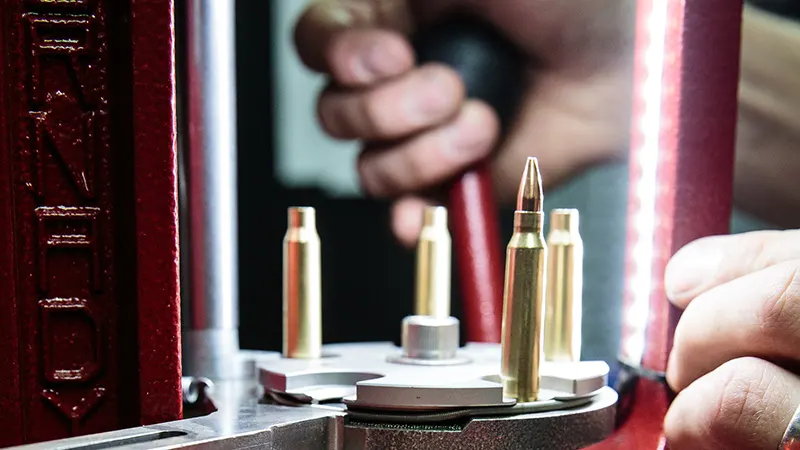
Of course, before you do anything related to guns and ammunition, you need to get a good understanding of the law first. The last thing you want to happen is to get in trouble for making DIY bullets for SHTF preparedness.
You can create your ammunition legally from scratch. However, you will require a license in order to sell any homemade ammo. You would need a Class 6 FFL license for three years, which costs $30. Applying for Class 3 requires the exact details as Class 6 but includes a photo and fingerprint cards.
You must also complete the paperwork in a few hours since the procedure is easy to understand. With proper tools, knowledge, skills, and techniques, any shooter can reload or make their cartridges. Bullet-making may be intimidating to first-timers, yet it is not as scary as you think.
Nowadays, the federal government wants to control ammunition transactions, especially guns, as much as possible. However, the reloading activity is still left unnoticed. Accessories and components needed to do the reloading process, such as brass, lead bullets, and powder, do not have regulations.
Reloading Safety Tips
First, what does reloading ammunition mean?
A simple explanation is this:
Reloading or handloading refers to the process of making your own firearm cartridges. Instead of buying factory-loaded ammunition, you assemble individual components of your own.
Reloading is an exciting process when correctly done. At the same time, the activity is also highly dangerous, particularly when you fail to observe the safety precautions.
To protect yourself from accidents when reloading, here are a few tips you need to remember:
Do not smoke while reloading.
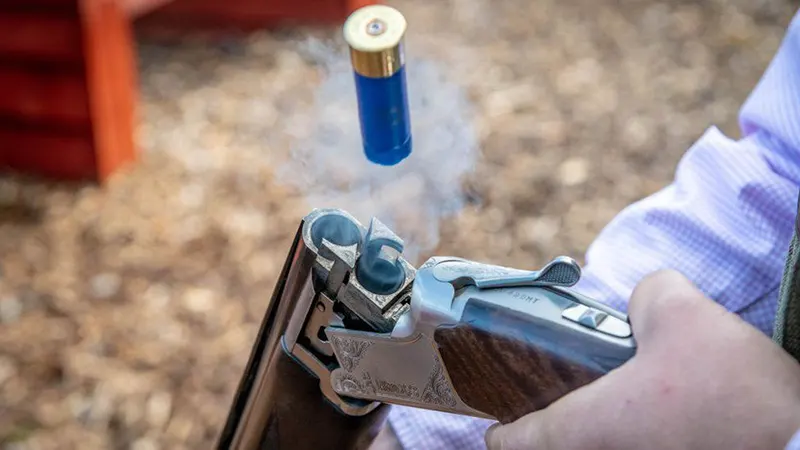
Store gunpowder should be situated away from any source of combustion. Take note that the powder commonly used when reloading is smokeless powder which is as flammable as gasoline. Thus, you should observe proper care and handling to avoid accidents.
Store primers in its packaging.
It’s not ideal to store primers in a big box, metal can, plastic container, or even glass. When it is accidentally struck, stabbed, or smashed, an explosion may happen.
Considering that, do not forget to wear your safety glasses when handling primers.
Focus on what you are doing.
Always put your mind on what you are currently doing, especially when you are measuring the powder. Keep in mind that an explosion may happen when you either put little or too much powder in its case.
Although the cartridge doesn’t explode, the quick expansion of the hot gases may cause it to burst violently, harming or completely killing the shooter and the gun.
Reloading kills through complacency so be mindful of what you are doing. Reloading shouldn’t be done while inebriated, sleepy, or preoccupied.
Secure your safety gears.
Before diving into the whole process, do not forget to equip yourself with standard safety equipment. Please work in a well-ventilated area and on a solid surface. Also, remember that you will deal with hot stoves and other dangerous things.
Make sure you have the following:
- Safety goggles or glasses
- Heavy-duty leather gloves
- Close-toed shoes
- Fire extinguisher
Parts of the Bullet Cartridge
Cartridges are frequently referred to as “bullets” or “shells” by non-experts. However, these are the wrong words.
In familiarizing yourself with the steps on how to make bullets, you must first understand what each term really means.
Both rifle and pistol ammunition fall under these concepts:
Bullet
This is the component that emerges from the gun and hits the target. The lead slug is placed into the case mouth, either pure lead or leads with a copper jacket. Numerous bullet designs are available, including wadcutters, hollow tips, full-metal jackets, and balls, to name a few.
Related article: How Much Are Bulletproof Windows? Your Complete Pricing Guide
Case
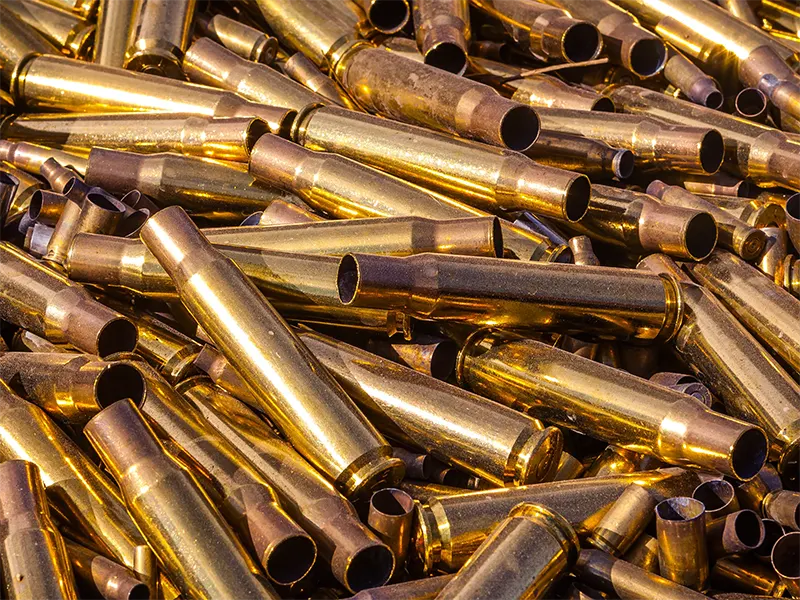
Sometimes called brass, this is the part that holds the powder and receives the seated bullet. It can be made of aluminum, steel, or brass. It is the only thing that can be reused when reloading.
Also, only the Boxer Primed cases with a single flash hole can be reloaded. Because cases with two flash holes (Berdan Primed) cannot be de-primed, they cannot be reloaded.
Powder
To distinguish it from the black powder used in muzzleloaders, the powder is more appropriately referred to as smokeless powder. It’s categorized as a propellant rather than an explosion since smokeless powder burns readily but does not explode.
Primer
You will see a steel-colored disk recessed into the bottom of the case if you turn over a round of ammo. This is what you call the primer. It has a small amount of high explosive in it which ignites the powder when the gun’s firing pin strikes it.
Cartridge
Shotgun shells are the only ammunition that uses the word “shell”, not rifle or handgun rounds.
When you put all the pieces mentioned previously, you will have yourself a cartridge, a round of ammunition that may be shot after being chambered in a firearm.
Things You Need in Making Your Own Bullets: Shotgun Reloading Supplies
In fact, reloading may cost just a few dollars as compared to buying a 50-count box of 44 Magnum bullets. However, this doesn’t apply to all types of ammo.
To help make sure you don’t spend money on items you won’t need for DIY bullets, here’s a list of supplies you should have:
Ammo box
An ammo box will serve as protection for your cartridges. It will prevent your bullets from scratching or denting. It is the best way to organize your ammo as it will ensure less movement. Plus, it will also let you easily count the number of rounds in each container.
Reloading equipment
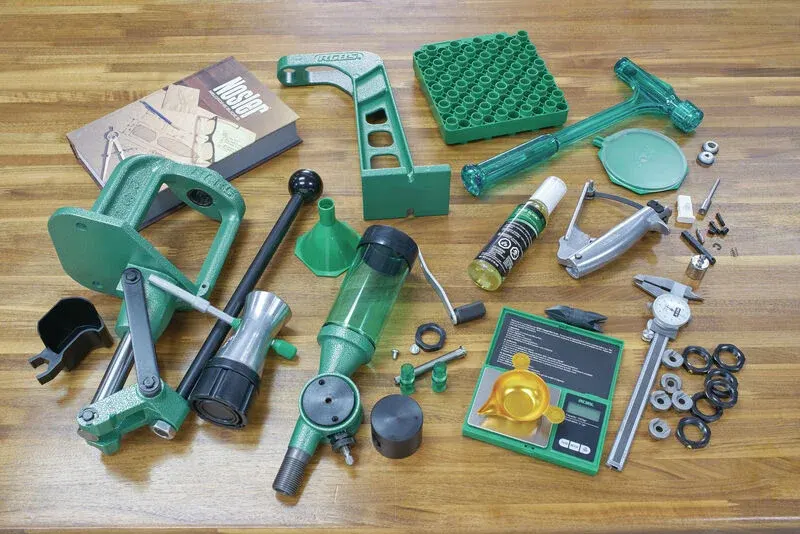
When choosing the best reloading kit, you will find many products claiming to be the leading ones in the market. With that, it’s best to research profoundly which reloading press serves its purpose in the long run.
The actual presses range from simple single-stage devices to fully automated progressive machines that dispense an entire round with each handle pull.
Most reloaders begin with a single-stage reloading press so they can practice each step in the reloading ammunition. However, they quickly upgrade to a more sophisticated press for speed and convenience.
It is entirely up to you how much automation you implement. However, the presses might get increasingly challenging and troublesome as you move up the scale. Many reloaders who use expensive presses frequently experience breakdowns and malfunctions.
Certain semi-automated turret-type presses can be set up and used as a single-stage press to begin with; once you have mastered the various stages when you reload ammo, you may use the automated ones.
Bullet Puller
A bullet puller is a piece of equipment for separating the bullet from the casing of a cartridge. Pulling your bullet will allow you to put a new batch of powder charge inside.
There are some misconceptions. Some people think that this is something used for pulling stuck cartridges. Others also think the bullet puller can damage the cartridge, but it cannot.
Pulling the bullet starts by inserting the bullet into the hammer’s head and by screwing the lid on. After that, you need to strike the impact bullet puller’s hammer end into a flat wooden surface. The powder is kept in a container so that you can keep it all while force pulls the bullet out.
Scale
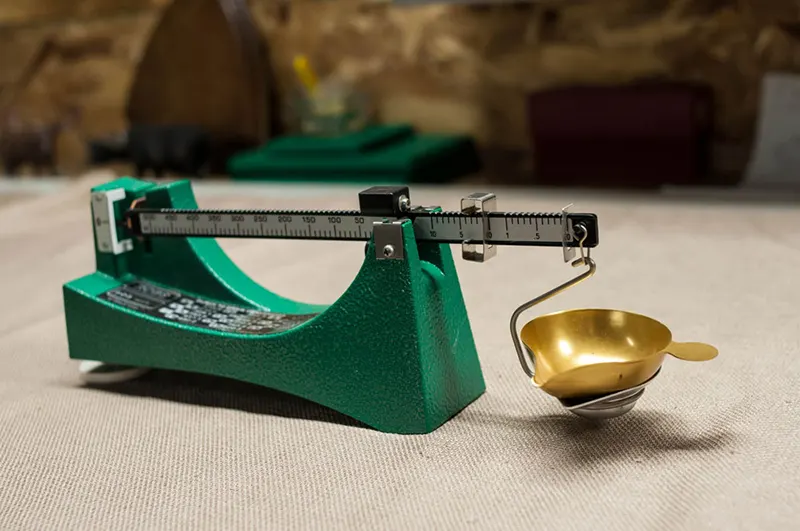
As we have previously mentioned, powder measurement is very important and using a scale helps you to be precise. This is particularly important when you’re weighing your powder.
There is a beam-type scale that ranges around $20. There are also digital scales that cost from $25 to $120. These mid-range scales are way more stable, straightforward, and accurate. Make sure the digital scale you buy can read grains if you’re buying it from a source other than a reloading equipment manufacturer.
The majority of non-dedicated digital scales can be set up to read in a variety of units. Some can read grains, and some of them can’t. Be careful not to mix grams (gr) and grains when looking for such scales; these are two different units. It is necessary for the digital scale to be able to read the weight in grains.
A high-end automated powder-dispensing scale can be purchased for $375 and above. Basically, you enter the number of grains of powder you need and then watch as the dispenser releases them.
Powder thrower
Another way to ensure that you are measuring the correct amount of powder is using a powder thrower. Consistency is key for this equipment. When using a powder measure or thrower, your actions in terms of dispensing the powder should be uniform throughout the cartridges.
Funnel
Putting the smokeless powder into your case can be challenging if you do not have the proper tool. With the help of a funnel, you can easily refill the powder into the case’s narrow hole.
Hand priming tool
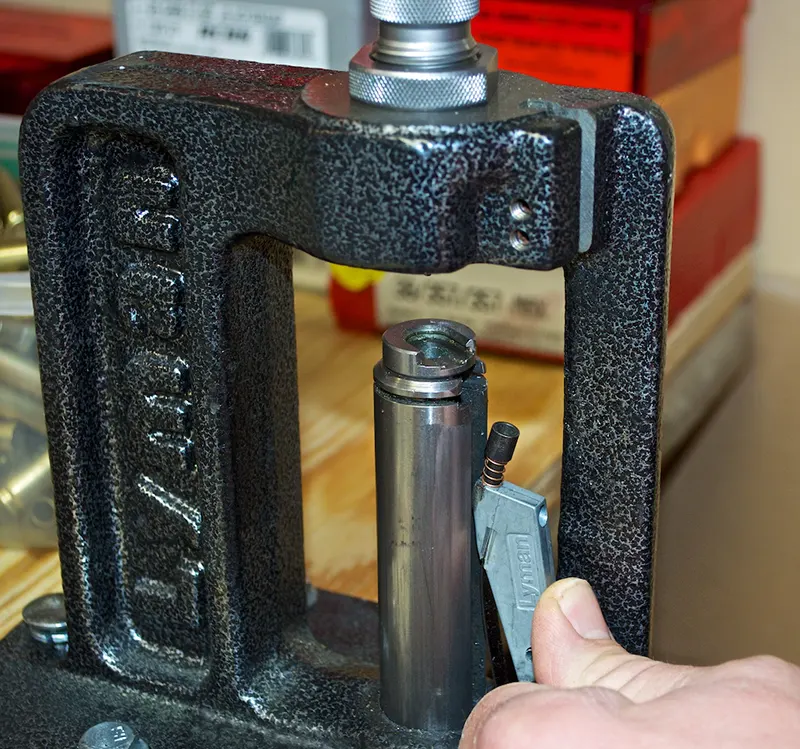
This is a hand-held press with a primer tray attached to it. The tool helps seat primers safely and quickly. The new primers are placed on the tray and a case is placed on top. With each hand motion, a primer is loaded into a case by the press.
A press-mounted priming device, however, can be as quick as or quicker than the hand-held instrument once it is set up. The press-mounted priming system is a viable choice when processing very big batches (hundreds of rounds).
Utilizing the press-mounted priming device that many presses have instead of buying a handheld tool will save you money.
Other accessories you will need:
- Case length trimmer
- Bore brush with handle
- Case tumbler
- Media separator
How to Make Bullets: The Steps
Making your bullets isn’t as easy as counting 1-2-3. However, the list of steps below helps simplify the process.
Prepare Brass Casings
You need to be careful in choosing your brass cases before anything else, particularly if you are planning on reusing them repeatedly. Consider choosing high-quality brass cases since low-grade brass may only last 3 to 4 reloads out of a single case.
Remember to have two separate zip lock bags for your brass cases. When you try to pick up cases in a shooting range, the bags make sorting used cartridges and new brass cases easier. Mixing them will give you inconsistencies, and I personally do not recommend it as it may compromise your safety.
Load Them Into The Case Tumbler
If your brass is a fired one, you need to clean it before reloading. However, you can skip this process if you have a newly bought set of cases.
So, why do you need to clean the fired brass?
Firstly, the grease and oil from the gun chamber may get stuck in your cases. The smokeless powder can also cause blackening in and out of the case. Plus, when the rounds are ejected, the dirt on the floor can cause contamination.
For context, a case tumbler is an electric bucket that vibrates the cases. The bucket contains corn or walnut hulls which can hold around 250 cases simultaneously. Usually, this process lasts an hour or two.
Transfer The Brass into a Media Separator
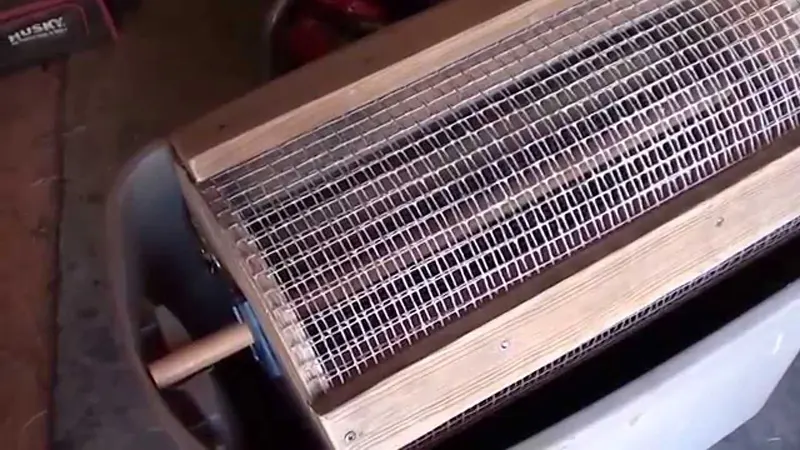
The media separator will let you separate the brass from the hulls. I do not recommend separating them manually using your hands as hazardous stuff may put you in danger.
You just need to roll the media separator with its handle and the hull will fall to the bottom after a minute.
Remove Used Primers
Back then, you needed to do this step manually. However, today, you will only need a lever to get everything done.
When removing primers, you can use a de-capping or de-priming die. It is a thin steel rod where you can insert a used casing into the press. After that, it pushes the primer out of the primer pocket. You can do this process by batch.
Simply place a case in the press shell holder, pull the lever, and the case will be instantly and automatically de-primed.
Clean Primer Pockets
You must clean each cartridge’s primer pocket after removing an old primer to eliminate any remaining power. Failure to do so will compromise gun safety and damage your shooting accuracy.
A cleaning brush for primer pockets is required to remove burned gunpowder from a primer pocket. Of course, a multi-stage press can be used to complete the task, but physical labor is preferable.
Attach a New Primer
There are two ways to attach a new primer. The first one is by using a hand priming device using your hands. It is a tool that seats primer to separate the seating operation from the supply. Another special tool is a reloading press.
However, I believe that the latter is more reliable. Do not forget to check if the primer sits below the edge of the case to ensure that it is properly installed.
Add Powder
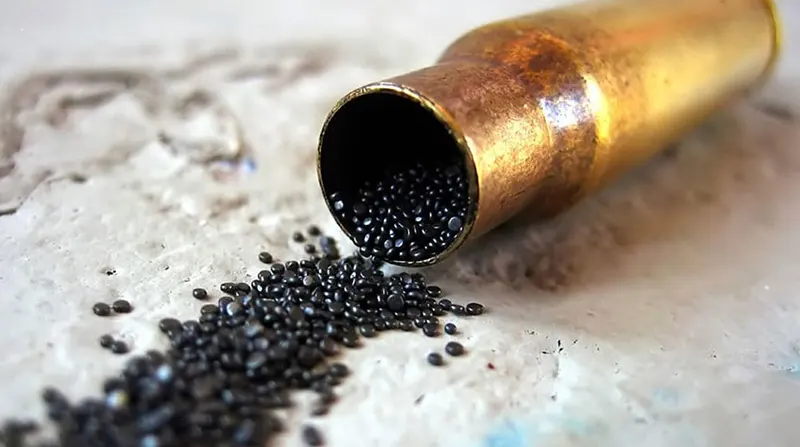
Again, remember to add the right amount of gunpowder to your cartridge. Know the suggested amount for the caliber you are using. Usually, you need to put around 6.3 to 6.8 grains of gunpowder into a 9mm ammo. Do not forget to make use of your scale or powder thrower.
Do a test run. If the amount of powder you are filling in is right, then you can carry out the remaining rounds in the same manner.
Attach a Bullet
In attaching a gun bullet, you need to put it on top of the round. Put your brass casing into the shell holder. Next, pull the lever and load the powder into the case. Get the new bullet and put it on the brass. To secure the bullet, make sure to pull the lever and press the bullet well down to the case.
Casting Lead Bullets
Bullets are commonly made of lead. To manufacture your own ammunition, you must first source an ample amount of lead. Usually, scrap yards and plumbing supply shops sell lead.
So, if you breathe guns and shooting, here is why you should know how casting bullets work and why it is a must-learn skill for you:
Advantages of Casting Your Own Gun Bullets
Here are the benefits of casting bullets on your own:
- Bullet casting will be fun for a gun enthusiast like you.
- It will let you save costs since factory-made ammo is quite expensive.
- It will let you make the shape and caliber or factory specifications according to whatever guns you have.
Tools You Need When Casting and How to Use Them
- It is important to select a well-ventilated and sheltered working area. I prefer the outdoors in doing this activity as it will prevent you from being too exposed to fumes and lead.
- Choose a sturdy and flat table. The surface should be resistance-proof. Note that your table can hold at least 20 pounds of weight.
- Next is to have a melting pot. Make sure it has bullet molds so you can make bullets according to your guns.
- A stainless steel spoon will help you separate the dirt that floats on the surface as the lead melts. It will also serve as a stirrer.
- Do not forget to wear some thick leather gloves and an industrial mask for safety. The mask will help you filter the lead alloy and prevent you from inhaling the chemical.
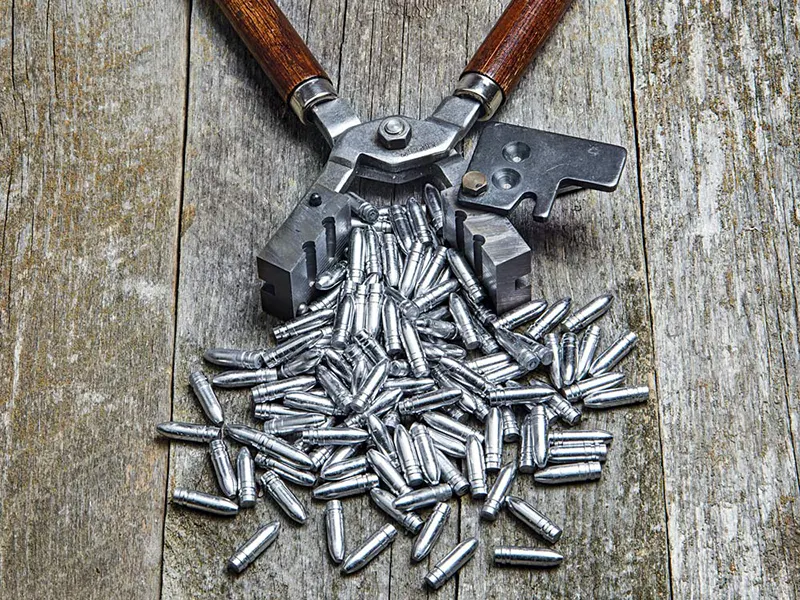
The Casting Process
- Set the pot to high and add your lead. Then, use the spoon to stir the melted alloy. Depending on the conditions of your environment, it could take 20 to 30 minutes to melt. Use the spoon to mix the melted alloy.
- Place the mold on top of the pot to also start heating it. There is a great possibility that you will get high-quality bullets when the molds are well-heated.
- Next is to flux the pot. Start by putting a piece of wax or bullet lube into the lead mixture. This process is significant in taking out any impurities and other contaminants floating. Anything that is not lead will stick into your fluxing compound, and then you can scoop it off after it picks up everything.
- After fluxing your bullet metal, it is time to start casting your own bullets. In filling your molds, ensure all the holes are filled and the lead is brimming right into the surface.
- After you cut the spruce, drop your hardened gun bullets into a bucket full of water. It will ensure that your own bullets are hardened further.
Can You Make and Save Money Making Bullets?
Starting from scratch and buying your own reloading equipment may not be economical at first. However, you may consider it as an investment.
Spending more time reloading your ammo will result in more financial savings. It’s not a big deal if you only save a few dollars the first week. However, if you set aside a small sum of money each week, it will only take a few months to make back the initial investment you made in the reloading press and the related supplies.
After that, think about how much money you’ll save if you regularly refill your ammunition. It can quickly add up to hundreds of dollars in the long term.
A Safety Reminder
Remember that producing bullets and other forms of ammunition calls for a solid command of firearms, skills, and knowledge. Working with a gun is risky, and safety measures should always be taken to protect you and others.
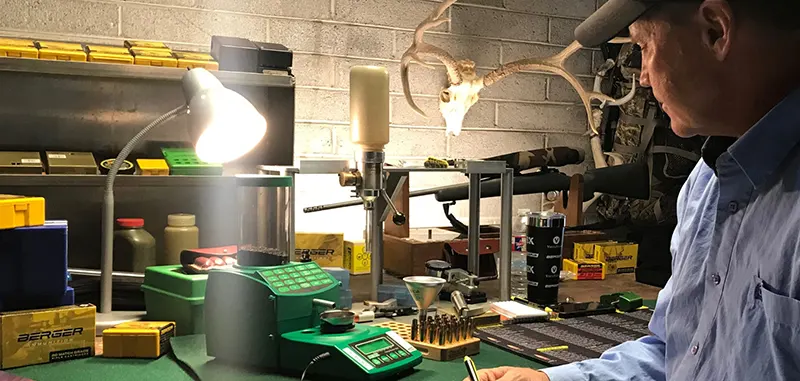
If at all feasible, always store loaded weapons away from children and other people who could injure themselves with them. Never leave a loaded gun alone in your home even when you’re just cleaning it.
